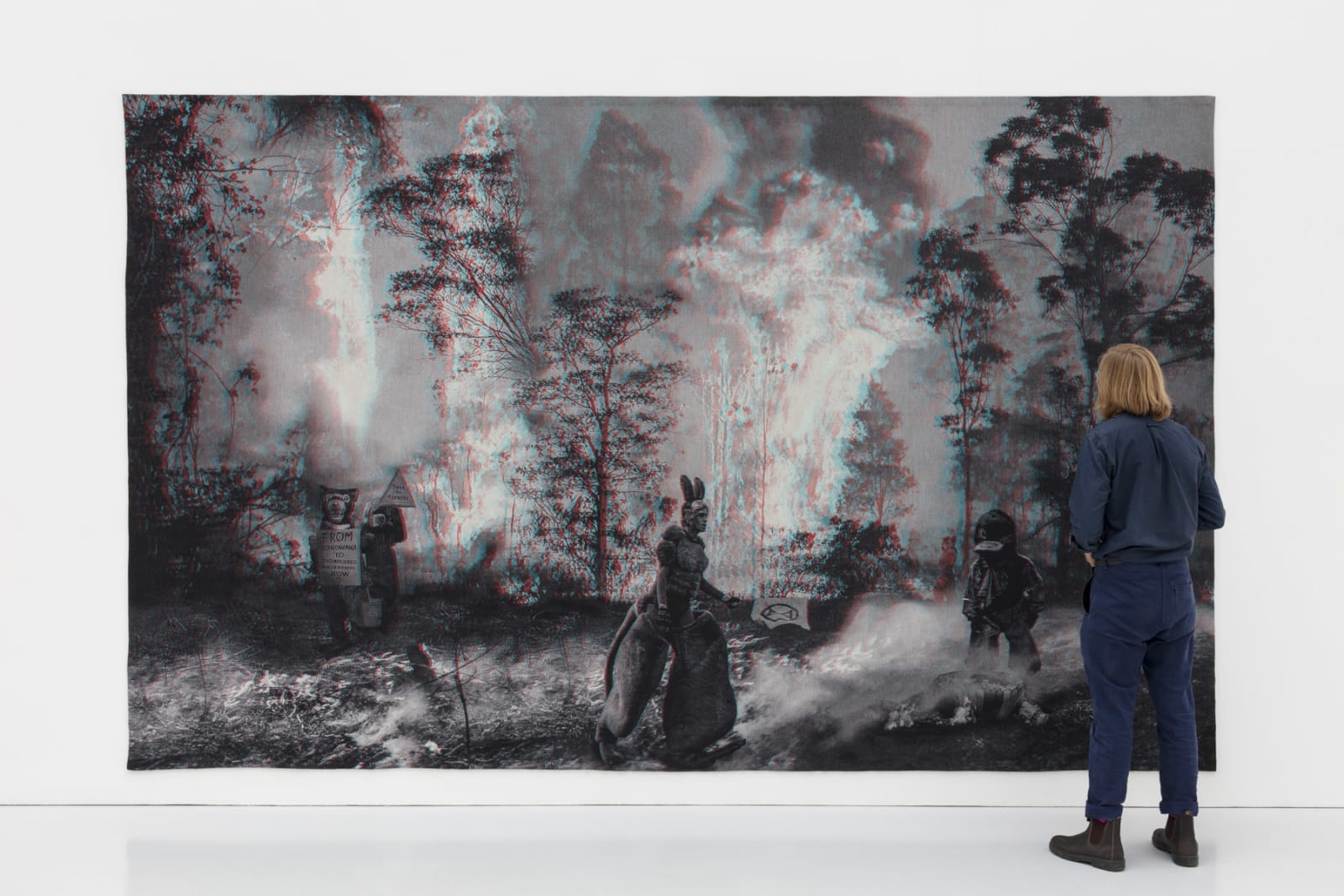

Goshka Macuga
From Gondwana to Endangered, Who is the Devil Now?, 2020
woven tapestry
275 x 436 cm
108 1/4 x 171 5/8 in
108 1/4 x 171 5/8 in
Edition of 5
'From Gondwana to Endangered, Who Is the Devil Now?' is the second tapestry from the 3-D series I started in 2018. It is generally concerned with global environmental issues, but...
"From Gondwana to Endangered, Who Is the Devil Now?" is the second tapestry from the 3-D series I started in 2018. It is generally concerned with global environmental issues, but refers specifically to the catastrophic damage wildfires wrought on the natural environment in California and Australia last year. The scene is set in the context of a burning forest, where some protesters dressed as animals gather in support of each other. As with Make Tofu Not War (Macuga's first 3D tapestry) the use of 3-D effects mimics a past understanding of an image of the future, while the animals reference a long tradition of depicting animals to represent or symbolise human characteristics. In the nineteenth century, cartoons published in magazine editorials featured animals as political symbols to influence voters by distilling complex ideas into humorous illustrations. The animal protesters in my piece can also be seen as relating to the “furry fandom” movement—a subculture interested in fictional animal characters with human personalities and characteristics." Goshka Macuga
Goshka Macuga’s practice is based on historical and archival research, which informs her installations, sculptures, tapestries, and collages. As an artist she simultaneously assumes the role of a curator, historian, and designer. Macuga questions historiography, political structures, and the pressing issues of our time. Over the past years, Macuga has created a series of large-scale tapestries that weave her ideas in assembly mind maps, presentations, and panoramic scenes. Macuga takes up the historical medium of Gobelin tapestries, a portable textile often emblazoned with political messages. Her new series of tapestries are woven in 3-D so that the viewers themselves become part of the scenario.
Goshka Macuga’s practice is based on historical and archival research, which informs her installations, sculptures, tapestries, and collages. As an artist she simultaneously assumes the role of a curator, historian, and designer. Macuga questions historiography, political structures, and the pressing issues of our time. Over the past years, Macuga has created a series of large-scale tapestries that weave her ideas in assembly mind maps, presentations, and panoramic scenes. Macuga takes up the historical medium of Gobelin tapestries, a portable textile often emblazoned with political messages. Her new series of tapestries are woven in 3-D so that the viewers themselves become part of the scenario.

